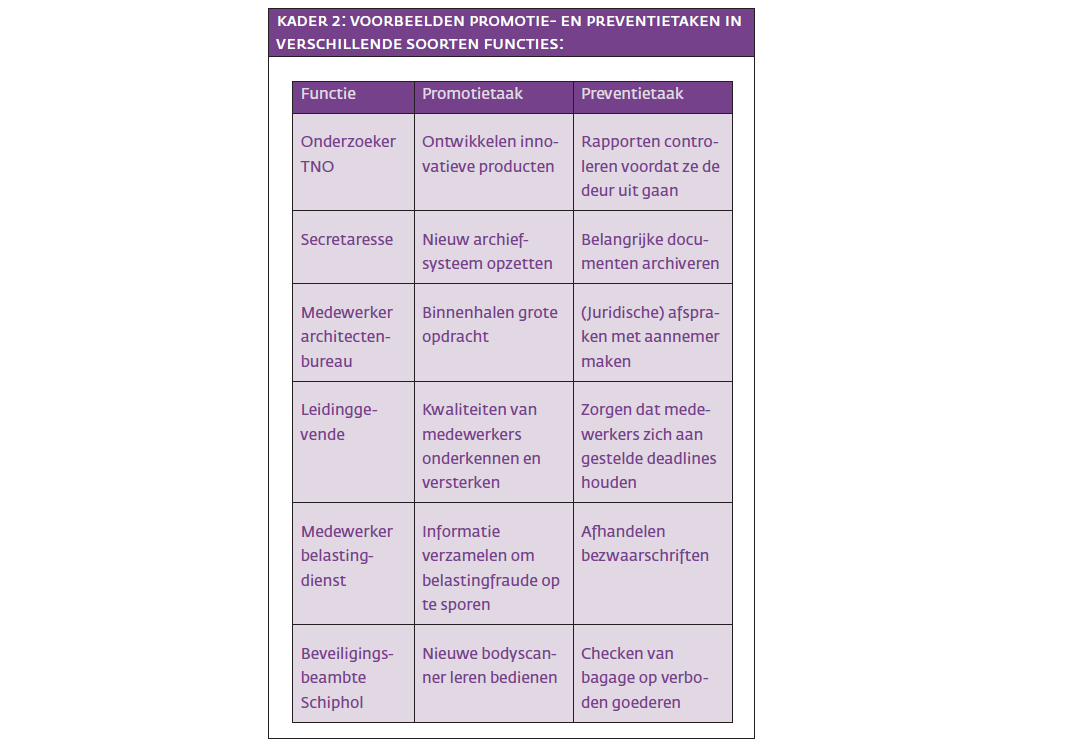Wat motiveert mensen in hun werk, en hoe kunnen ze optimaal presteren? Dit zijn belangrijke vragen waar veel psychologen in de praktijk mee te maken hebben. In deze bijdrage benaderen we deze vragen vanuit het perspectief van de Regulatory Focus Theory (RFT) van Higgins (1997)17. RFT gaat uit van twee systemen die het doelgerichte gedrag van mensen sturen; een preventie-oriëntatie en een promotieoriëntatie. Wanneer iemand een preventie-oriëntatie heeft, is deze persoon gericht op het nakomen van verplichtingen en op het voorkomen van fouten. Wanneer iemand een promotie-oriëntatie heeft, ligt de nadruk juist op het verwezenlijken van idealen en is men op zoek naar kansen om dit succes te bereiken.
De zelfregulatie-oriëntaties die mensen in het werk hanteren kunnen helpen hun werkprestaties te optimaliseren. Deze oriëntaties beïnvloeden namelijk de manier waarop mensen aan hun taken werken en hoe ze proberen om goede resultaten te behalen (Crowe & Higgins, 1997; Friedman & Förster, 2001; Fö



